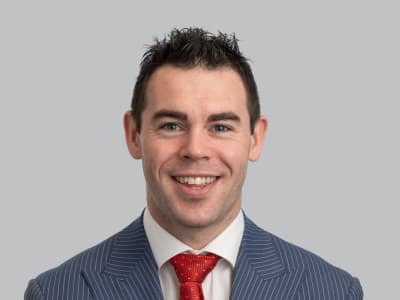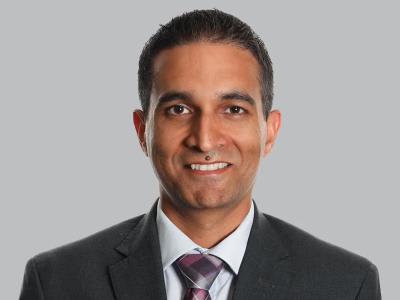On 11 August 2023, Revenue NSW and the Victorian State Revenue Office issued identical revenue rulings on the application of ‘relevant contract’ provisions contained in harmonised payroll tax legislation to medical centre business and medical practitioners.
The issuance of these rulings follows corresponding developments in Queensland and South Australia, on 22 December 2022 and 30 June 2023, respectively.
In light of these harmonised payroll tax rulings, and relevant amnesties (referenced below), it is necessary for potentially affected taxpayers to:
- Consider whether it might be arguable or demonstrable that a ‘tenancy’ arrangement is in place;
- Consider the potential application of the exemption for ‘providing services to the public generally’, and whether the positions espoused by relevant authorities with respect to ‘third party payments’ are tenable at law. We note that position taken by the relevant authorities on this point is untested at law as it was not opined upon in the recent cases. We note this exemption is in addition to the exemption available where a medical practitioner provides services for 90 days or less to a single practice during a payroll tax year; and
- Consider whether to apply for amnesties being offered in some jurisdictions, noting that some practices may decide the costs and risks with applying could outweigh the potential benefits (i.e., in light of information disclosure requirements and also the need to “accept” that a payroll tax liability applies before being entitled to access the amnesty).
BACKGROUND
Issuance of the harmonised payroll tax rulings in New South Wales and Victoria represents a coordinated response to the following two cases:
- Commissioner of State Revenue v The Optical Superstore [2019] VSCA 197 (Optical Superstore); and
- Thomas and Naaz Pty Ltd v Chief Commissioner of State Revenue [2021] NSWCATAD 259 (Thomas and Naaz).
In Optical Superstore, the Supreme Court of Victoria found in favour of the Commissioner of State Revenue, holding that payroll tax applied to payments made by an optical dispensary business to optometrists or their related entities in connection with eye tests performed by the optometrists.
In Thomas and Naaz, the New South Wales Civil and Administrative Tribunal similarly found in favour of the Chief Commissioner of State Revenue, holding that payroll tax applied to payments made by a medical centre to general practitioners in connection with consulting services rendered by the general practitioners. The taxpayer’s subsequent appeal to the New South Wales Court of Appeal were dismissed, with the Tribunal’s original decision remaining undisturbed.
Key principles enunciated in these two cases included that:
- The relevant meaning of ‘payment’ includes payment to which a person is already entitled (e.g., where the money was held by the medical centre or optical dispensary business on trust for the practitioner), meaning the passing on of patient fees or Medicare rebates can be a ‘payment’ for the purposes of the relevant contract provisions;
- The term ‘for or in relation to the performance of work’ should be broadly construed; and
- In the relevant circumstances, services were provided to the medical centre and optical dispensary business (respectively, as principal) as well as to customers/patients.
HARMONISED PAYROLL TAX RULINGS
Broadly, the harmonised payroll tax rulings apply and extend the foregoing principles, providing that payroll tax will apply where a medical centre[1] engages a practitioner to practise from its medical centre or holds out to the public that it provides patients with access to medical services of a practitioner, unless a relevant exemption applies.
The harmonised payroll tax rulings also describes the exception for ‘providing services to the public generally’, suggesting that a practitioner must provides its services to a number of practices to access this exemption, rather than only needing to provide its services to a number of patients.
The rulings briefly raise that payroll tax can apply to ‘third party payments’, such that even if the practitioner assigns its right to receive the net patient fees and Medicare rebates to a third party, this could also be caught. The broad application of the ‘third party payments’ provision could potentially mean that, even if a practitioner is directly paid by patients and Medicare, there is the possibility that the revenue authorities could argue that these represent constructive ‘third party payments’ and, therefore, attract payroll tax. While this point is not strictly addressed in the rulings, the reference to ‘third party payments’ in the rulings suggests that the revenue authorities could use this argument in future reviews and audits.
RSM VIEW
Whilst the harmonised payroll tax rulings provide guidance on the factors to which the relevant authority in each state will have regard to in making a determination on the application of payroll tax, no ‘bright line’ test is prescribed for determining whether or when the relevant contract provisions will be enlivened.
It is specifically noted that the ambit of the ‘services of the same kind to the public’ exception was not considered in detail in either Optical Superstore or Thomas and Naaz, whereas the harmonised payroll tax rulings postulate an untested view. The potential uncertainty of the relevant authorities in this regard is evident from the use of tentative language such as the term ‘may not’ in the relevant paragraphs. It is further noted that the application of payroll tax to third party payments is also untested with respect to medical centres, with the relevant authorities again employing tentative language such as ‘may’ in the relevant paragraphs. The lack of clear and unambiguous language does, to some extent, undermine the level of certainty that medical centres can take from the rulings, particularly with respect to these two points.
Consistent with our previous Insight, RSM’s view is that relevant service agreements must make clear that the medical centre is providing a service to practitioners who are using the facility to see and treat their patients. Be aware that this would require a complete reconsideration of just who is in practice, whose practice it is and how this is portrayed and communicated to the public and the patients. It is acknowledged this revamp might be a step too far for most medical centres, and payroll tax grouping may still apply in any case.
CURRENT STATE OF PLAY / TAKE-AWAYS
With the flurry of developments in this space in addition to the issuance of the harmonised payroll tax rulings, it is opportune to take stock of the state of play across Australia’s various states and territories.
Australian Capital Territory
Despite anecdotes suggesting that the ACT Revenue Office has commenced contacting medical centres across Canberra regarding payroll tax, no relevant announcements have been made.
New South Wales
Notwithstanding that ruling issued by Revenue NSW is stated to apply with retrospective effect from 1 July 2018, the NSW Government announced on 24 August 2024 that it will move to pause payroll tax audits for general practitioners and their practices for 12 months to allow for ongoing consultation with the Royal Australian College of General Practitioners and Australian Medical Association. As of the date of this Insight, the announced ‘move’ has not yet been enacted.[4]
Northern Territory
Similar to the Australian Capital Territory (ACT), the Northern Territory (NT) has not made any relevant announcements relating to the application of payroll tax to medical centres.
Queensland
Notwithstanding it issued the first of the harmonised payroll tax ruling on 22 December 2022, the Queensland Revenue Office (QRO) has instituted an amnesty whereunder no payroll tax will be applied to payments made to contracted general practitioners (only) until 30 June 2025. Interested parties have until 29 September 2023 to complete an expression of interest form[2], whereafter they must prior to 30 June 2025 make a voluntary disclosure to the QRO, and register for payroll tax, where applicable. Note that there attached disclosure requirements (e.g., relevant annual wage information, including total payments to general practitioners), and that this may be shared with relevant authorities in other jurisdictions. It is worth noting that the amnesty can only be accessed by lodging payroll tax returns that include the payments to practitioners as taxable wages. Therefore, a practice effectively has to accept that it has a payroll tax liability before it can obtain relief under the amnesty. This may present a challenge that needs to be overcome if the practice ever decides to take the view that it is not liable for payroll tax on its payments to general practitioners.
South Australia
Similar to the QRO, Revenue SA has announced an amnesty for successful applicants until 30 June 2024, again for general practitioners only. Designated medical practices have until 30 September 2023 to register to be part of the amnesty, whereafter they must make a voluntary disclosure (and register for payroll tax, where applicable) by 30 June 2024[3], with similar information disclosure requirements attaching.
Tasmania
Unlike the other states, but consistent with the ACT and NT, no relevant announcement has been made by the Tasmanian State Revenue Office.
Victoria
Similar to its Revenue NSW counterparts, the Victorian State Revenue Office (SRO) has issued a harmonised payroll tax ruling without announcing any amnesty. The harmonised tax ruling issued by the Victorian SRO is expressly stated to apply ‘retrospectively’, but without a specified date of effect.
Western Australia
Unlike the other states and territories, Western Australia’s payroll tax legislation does not contain relevant contract provisions, whereas the Treasurer and Deputy Premier has expressly confirmed in a letter to the Royal Australian College of General Practitioners that Western Australia does not intend to change its payroll tax provisions.
RSM CAN HELP
If you are potentially affected by the developments set out in this Insight, please contact Rick Kimberley or Sam Mohammad of RSM Australia.
[1] The relevant definition of ‘medical centre’ includes dental clinics, physiotherapy practices, radiology centres and ‘similar healthcare providers’ who contractor with medical, dental and’ other health practitioners’ or their entities.
[2] Amnesty for GPs - Queensland Revenue Office (qro.qld.gov.au)
[3] Amnesty for medical practices with contracted general practitioners | RevenueSA
[4] NSW Government moves to pause payroll tax audits for GPs for 12 months







